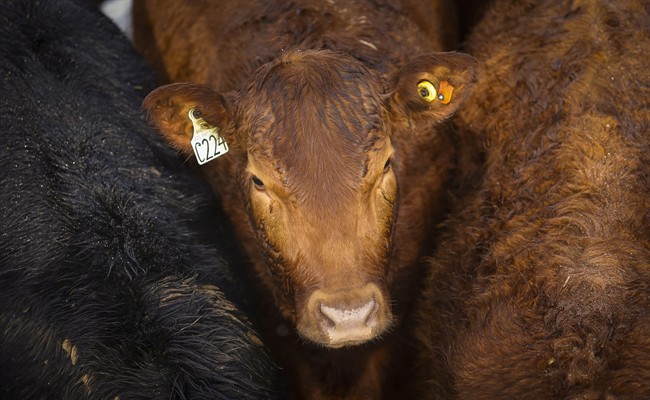STRATHMORE, Alta. — It’s not the Wild West but there are still low-down varmints stealing cattle and reaching into the pockets of ranchers in Alberta and Saskatchewan.

Cattle rustling has been around for ages and police say it is on the rebound in the heart of Canada’s cattle industry, driven largely by ranch hands stealing livestock at a time when cattle prices are high.
“It’s still a problem today. It’s like any other property, if there’s value to it people are going to steal it. In recent years the value of cattle has approximately doubled,” said RCMP Cpl. Christian Reister, one of Alberta’s two livestock officers.
The value of that cow grazing out in the field can range from $1,500 to $2,000 apiece, which makes them particularly attractive to thieves.
Reister, 45, looked right at home wearing a black cowboy hat, black coat, blue jeans and cowboy boots at a cattle auction in Strathmore, about 60 kilometres east of Calgary.
He said the number of missing cattle in Alberta rose from 575 in 2014 to 600 in 2015. Saskatchewan’s numbers for last year aren’t available but there was a sizeable jump from 600 in 2013 to 1,000 in 2014.

Get weekly money news
WATCH: Farmers and Alberta government officials react to drought conditions during the 2015 growing season, which had an effect on crop yields, feed prices and herd sales.
“Some of those stats in the increase in Saskatchewan can be attributed to producers paying a little closer attention to their assets and watching their numbers a little closer,” said Reister.
The investigations are tough. Looking for a cattle rustler today isn’t that much different than it was 50 years ago.
“I think there are a lot of producers who often have a few head taken and they don’t know,” Reister said.
“It’s some of the most difficult investigations that we do. We look for tire impressions, we look for footwear impressions, we look for gateways that are cut so at this stage in 2016 really our investigations haven’t changed any.”
Reister said if cattle are stolen police usually don’t need to go much further than local cowhands or neighbours.
“They’re inside jobs primarily — employees — some of them are neighbours. In some cases they just live close to the individuals but in all cases they are people who do have knowledge of handling cattle,” he said.
“It would be pretty intimidating for someone from the city that’s never had an experience handling cattle to carry out that type of theft.”
Making investigations even harder is the fact only about half of producers now burn their individual brands onto the sides of the cattle. It used to be an industry norm but without it rustlers have an easier time getting away with the crime.
Gary Guichon of Livestock Investigation Services, a private company contracted by the Alberta government to do cattle inspections, says cattle without brands automatically raise suspicions.
“Most livestock inspectors have local knowledge so in most cases they will have an idea of the guy bringing the cattle in,” said Guichon, who has been inspecting brands for 34 years.
“If it’s someone you don’t know you’re probably gonna have a closer look at the cattle and look at the brands and any other identifiers that may help you out.”

Comments